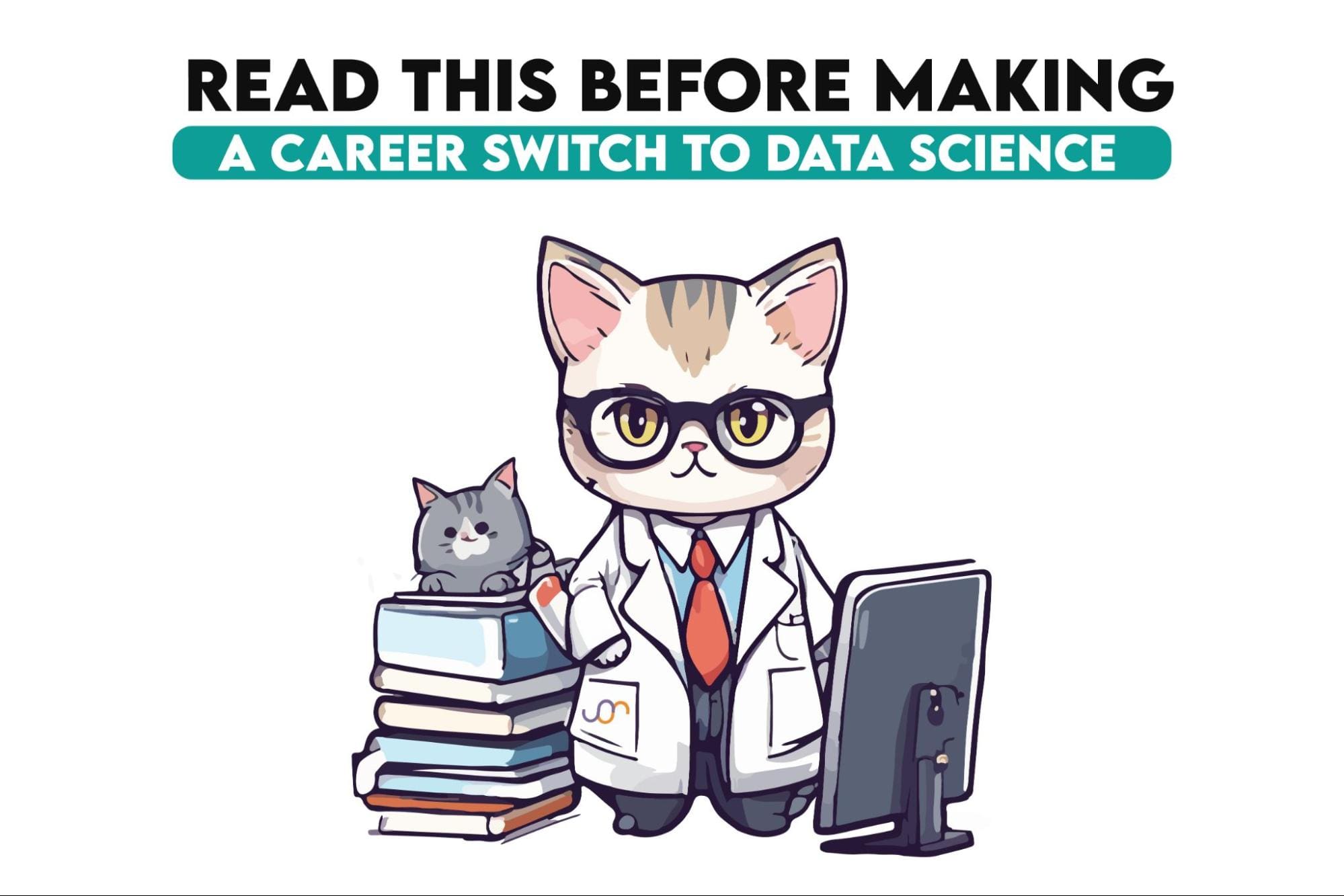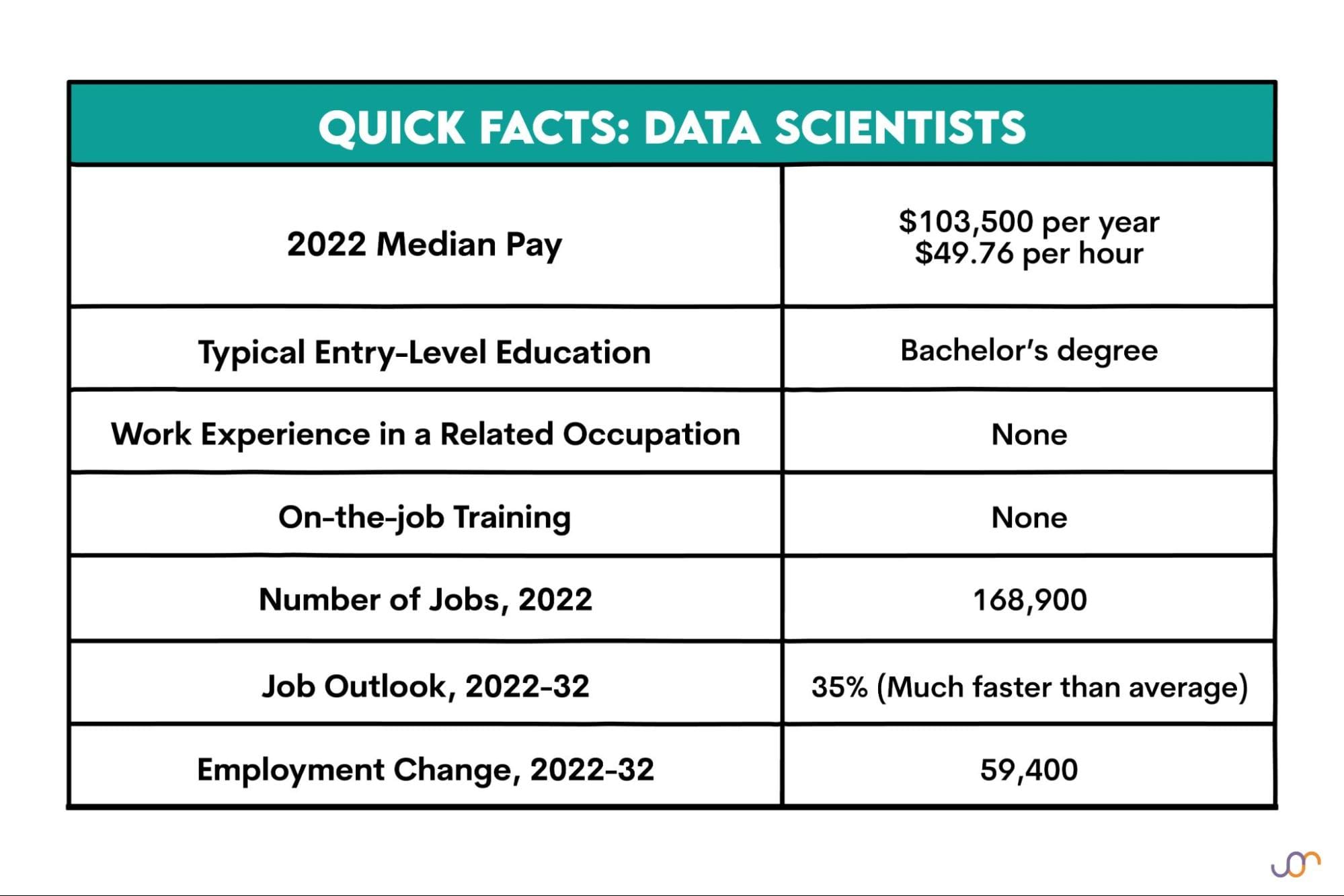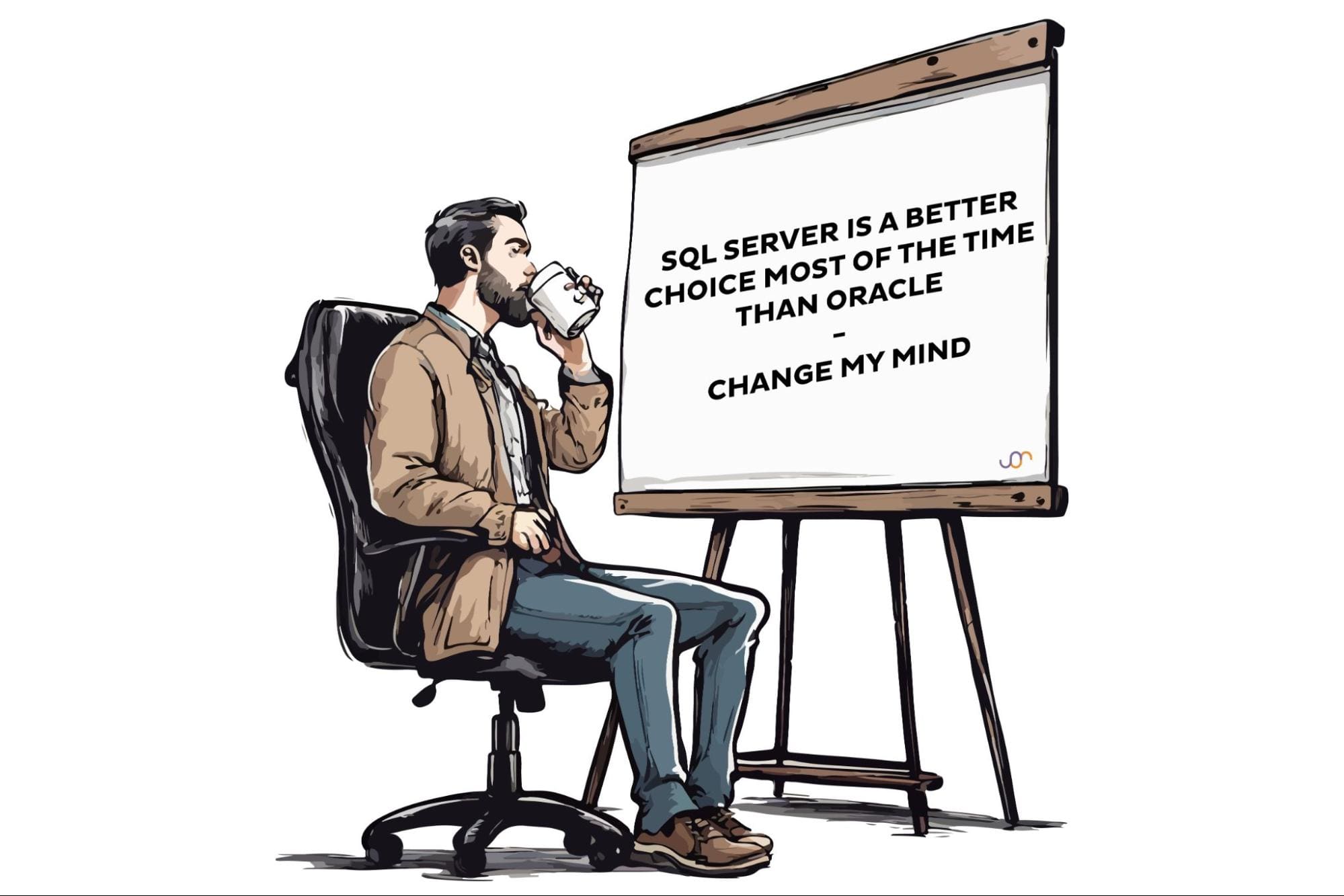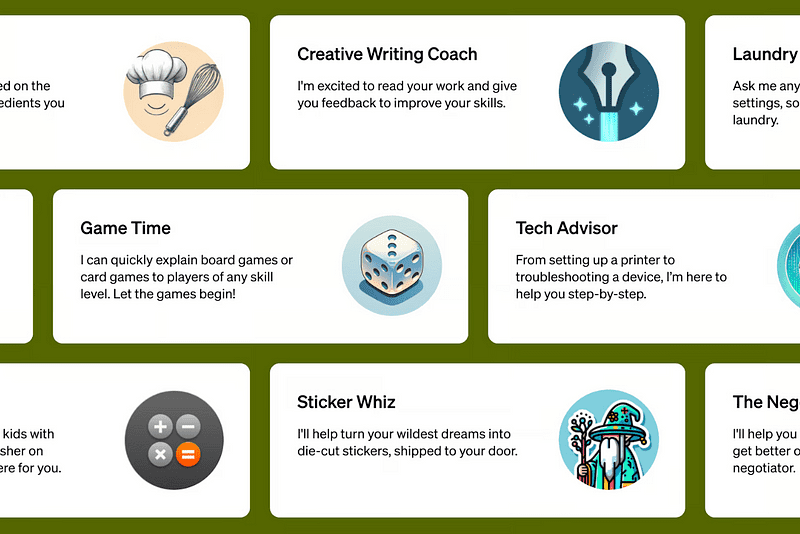
Image by Author
You’re reading this because you’re thinking about joining the ranks of aspiring data scientists. And who can blame you? Data science is a growing field, even a decade after its now-infamous “sexiest job” accolade from the Harvard Business Review. The US Bureau of Labor Statistics currently predicts the employment rate for data scientists will grow by 35 percent from 2022 to 2032. Compare that to the average job growth rate, which is just 5 percent.
It has other things going for it:
- It’s well-paid (again, the BLS found a median salary of $103k in 2022)
- It comes with a high quality of life (higher than average job-related happiness according to Career Explorer)
- There is job security despite the recent round of layoffs – because there’s so much demand for the role
So there are plenty of reasons to want to break into the field.

Source: https://www.bls.gov/ooh/math/data-scientists.html
But data science is a very broad field, with lots of different job titles and skill sets you need to know before you get started. This article will guide you through the various directions you can go, and what you need to know for each one to get into data science.
To make a successful transition into a data science career, you’ll need to follow a structured approach:
- Assess your data science skills and identify gaps.
- Get hands-on experience in the areas where you are weak.
- Network. Join data science groups, attend meetups, and contribute to forums.
Let’s dive deeper.
Assess Your Starting Position
What do you already know and how can it be applied in data science? Think about: any programming knowledge, statistical skills, or data analysis experience you have.
Next, identify the gaps in your skills, particularly those essential for data science. SQL is a real must, but Python or R programming, advanced statistics, machine learning, and data visualization are also extremely beneficial.
Once you’ve pinpointed these gaps, seek relevant education or training to fill them. This could be through online courses, university programs, bootcamps, or self-study, with a focus on practical, hands-on learning.
Hands-on Experience
You shouldn’t just watch videos and read blog posts. Hands-on experience is crucial in data science. Engage in projects that allow you to apply your new skills in real-world scenarios. This could be personal projects, contributions to open-source platforms, or participation in data competitions like those on Kaggle.
If you have some basic starting skills, you might want to consider seeking internships or freelance work to gain industry experience.
Most importantly, document all your projects and experiences in a portfolio, highlighting your problem-solving process, the techniques you used, and the impact of your work.
Network
Breaking into data science often comes down to who you know, in addition to what you know. Find mentors, participate in meetups, conferences, and workshops to learn about new trends, and engage in online data science communities like Stack Overflow, GitHub, or Reddit. These platforms allow you to learn from others, share your knowledge, and get noticed within the data science community.
If you want to become a data scientist from scratch, it makes sense to think of the skills you’ll need to develop as a tree. There are “trunk” skills that are common to every data science job, and then each specialty has “branch” skills that continue branching off into more and more specialized roles.
There are three main skills every data scientist needs, no matter what direction they go in:
Data Manipulation/Wrangling Using SQL
Data science basically boils down to handling and organizing large datasets. To do that, you need to know SQL. It is the essential tool for data manipulation and wrangling.

Image by Author
Soft Skills
Data science doesn’t happen in a vacuum. You need to play nice with others, which means buffing up your soft skills. Being able to communicate complex data findings in a clear and understandable manner to non-technical stakeholders is as important as technical skills. These include effective communication, problem-solving, and business acumen.
Problem-solving helps in tackling complex data challenges, while business acumen ensures that data-driven solutions are aligned with organizational goals.
Constant Learning Attitude
Data science is different from where it was even five years ago. Just look at where we are today with AI compared to 2018. There are new tools, techniques, and theories constantly emerging. That is why you need a continuous learning mindset to stay up to date with the latest developments and adapt to new technologies and methodologies in the field.
You’ll need self-motivation to learn and adapt, as well as a proactive approach to acquiring new knowledge and skills.
While there are common skills as I outlined above, each role demands its own specific skill set. (Remember? Branches.) For example, statistical analysis, programming skills in Python/R, and data visualization are all specific to more specialized jobs in data science.

Image by Author
Let’s break down each data science-adjacent role so you can see what you need.
Business/Data Analyst
Yes, this is a data science role! Even if the naysayers disagree, I still believe you can treat it as a stepping stone at the very least if you are aiming to get into the data science career track.
As a business or data analyst, you’re in charge of bridging the gap between data insights and business strategy. It’s perfect for those who have a knack for understanding business needs and translating them into data-driven solutions.
As core skills, you’ll need business intelligence – no surprises there –, strong analytical skills, proficiency in data querying languages, predominantly SQL. In this role, Python and R are optional because the main task is to data wrangle.
There is a visualization component but depending on your job, it can mean creating dashboards in Tableau or graphs in Excel.
Data Analytics
This role focuses on interpreting data to provide actionable insights. It’s a great job for you if you enjoy translating numbers into stories and business strategies.
You’ll need a firm handle on statistical analysis and data visualization – though again, these can be tableau dashboards and/or Excel graphs). You’ll also need proficiency in analytics tools like Excel, Tableau, and SQL. Python/R are once again optional, but remember they can really help with implementing statistics and automation.
Machine Learning
Machine Learning scientists develop predictive models and algorithms to make data-driven predictions or decisions. These roles are suited for those who have a strong interest in AI and model building.
No surprises as to core skills: you’ll need a deep understanding of algorithms, experience with machine learning frameworks like TensorFlow and PyTorch, and strong programming skills. Python and/or R are no longer optional but a must-have.
Data Engineering
This role has you focus on the architecture, management, and maintenance of data pipelines. It’s a good fit for individuals who enjoy the technical challenges of managing and optimizing data flow and storage.
To get into this job, you’ll need expertise in database management, ETL processes, and proficiency in big data technologies like Hadoop and Spark. You’ll also need proficiency in data pipeline automation using technologies such as Airflow.
Business Intelligence
In business intelligence, it’s all about building visualizations. It’s great for storytellers and folks with a strong business sense.
You’ll need to be a pro with dashboarding technologies such as Tableau and Qlik since those are the tools you’ll use to build out your visualizations. You’ll also need data manipulation skills (read: SQL skills) to help optimize data queries that make dashboard performance fast.
As I mentioned earlier in the article, data science is a quickly evolving field. New jobs and roles are opening up all the time. To go back to my tree analogy, I like to think of it as new branches being added onto the main data science trunk. There are now cloud engineers, SQL specialists, DevOps roles, and more – all still connected to that data science track. So this article provides just a brief smattering of the directions you could go with data science.
More than that, you should also remember that data science comes with challenges attached to that six-figure paycheck. There’s a very steep learning curve, and the learning never really ends. New technologies, trends, and tools all come fast and hard – and if you want to keep your job, you have to keep up.
All that being said, it’s a great career option. With the three main competencies I mentioned under your belt, you’ll be well-equipped to take on any data science role that appeals to you.
Nate Rosidi is a data scientist and in product strategy. He’s also an adjunct professor teaching analytics, and is the founder of StrataScratch, a platform helping data scientists prepare for their interviews with real interview questions from top companies. Connect with him on Twitter: StrataScratch or LinkedIn.



